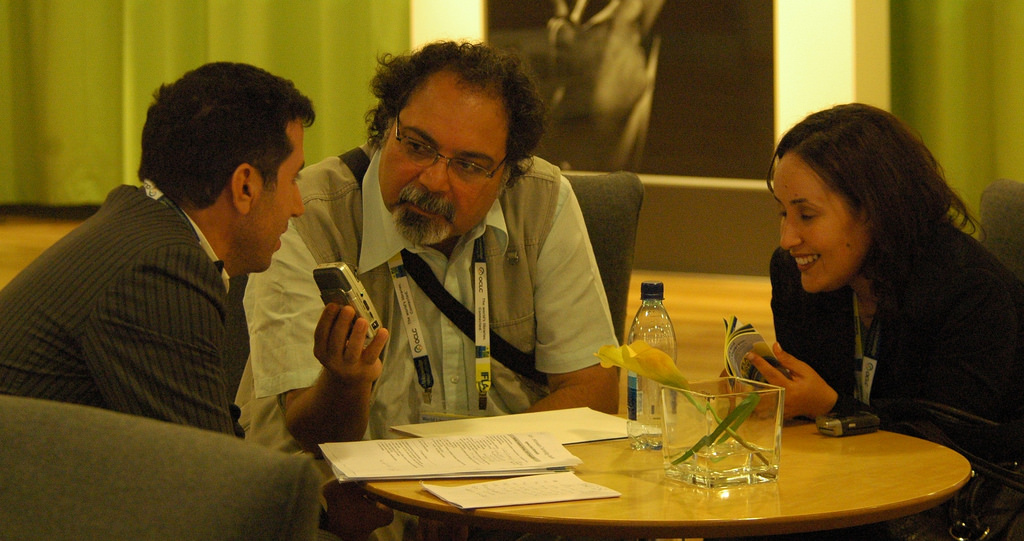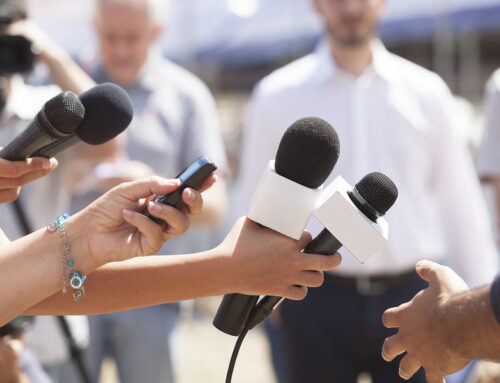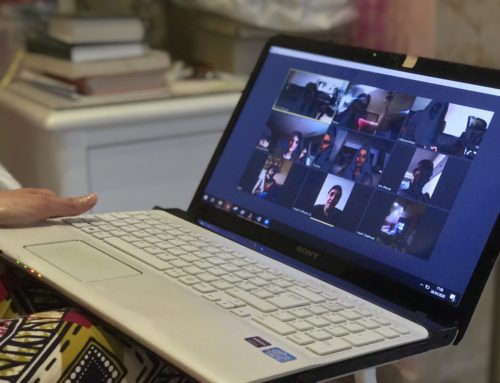
One way to earn better coverage is to get out of the office and meet reporters face to face. Flickr Creative Commons photo by Per Egevad.
If you’re like most nonprofit communicators, your go-to move is to send a press release to the media whenever your organization announces something new.
But if you have been disappointed with the results of your releases, it might be time to try a different approach: getting your top leader out of the office and in front of the journalists you’re counting on to tell your story.
In recent months, I’ve been setting up media tours for nonprofits and foundations in which an executive or expert within the organization sets aside a day or two to meet informally with key reporters and editors — and these tours have generated some terrific results.
While it requires an investment of time — and some serious preparation — a media tour can be an incredibly valuable exercise for organizations that are looking to build a lasting media presence. A media tour can be especially helpful when your organization is looking to:
- introduce a new leader who is looking to articulate his or her vision for your organization to the public
- launch a significant new initiative
- bolster the reputation of a thought leader within your organization
- release a new strategic plan
- break into a new media market
- target a national audience
At a time when most outreach to news outlets occurs virtually, there’s real value in finding opportunities to meet in person. By having your leaders sit across the table from a reporter or editor, you’re able to demonstrate their expertise, build rapport, show their passion for your organization’s work, and (perhaps most importantly) learn more about what the journalist is working on and cares about.
In turn, you are likely to develop a relationship that can lead to ongoing opportunities to tell your story and show your expertise. We’ve found that even one positive face-to-face meeting with a journalist can put you top of mind whenever that journalist is looking for sources for future stories.
You become a go-to source that they know and trust.
But before you decide to clear your executive director’s schedule for a day of press meetings, keep in mind that successful media tours require quite a bit of planning, preparation, and persistence.
Here are a few things to keep in mind as you consider setting up a tour:
Be Selective — Before you begin, have a goal in mind. If you’re launching a new program, for instance, identify the key audiences you need to reach for your program to succeed and then take time to identify a handful of reporters and editors who work at outlets that reach those audiences.
Set a Realistic Timeline — Your organization’s leaders are busy people — and so are journalists. To get on their schedules (and to ensure that you’re not wasting your own time), begin the process of setting up your tour at least 3-4 weeks ahead of time. This will allow you to get on journalists’ calendars before they fill up, identify potential conflicts, and work through your target list in order of priority. This also leaves enough time in the process to research the journalists you’re meeting with, develop briefing materials (more on this shortly!), and prepare for the meetings.
Leave White Space — If you’re setting up one day of media meetings as part of your tour, you’ll likely feel the urge to pack the day with as many meetings as possible. But a packed schedule can lead to rushed meetings, late appearances, and stress. A realistic tour more likely includes a pair of morning meetings, a break for lunch, and a pair of afternoon meetings — and 30 minutes to an hour of unscheduled time between each meeting to accommodate travel time and conversations that run long.
Do Your Homework — Conduct as much research about each journalist you’re meeting with as you can. Read their bios. Study their recent coverage online. Follow them on Twitter and other social networks. This will help you understand what they care about and identify ways in which you can help them moving forward.
Prepare a Briefing — Each time we set up an in-person meeting between a source and a reporter, we create a written briefing that includes goals, key talking points, background about the reporter and his or her work, and logistical details about the meeting itself (where it will take place, whether it’s on or off the record, how long the meeting is scheduled for, etc.). This material helps the source prepare for the conversation — and it’s especially important for a source who is preparing for multiple meetings on the same day.
Be Flexible — The news business can be unpredictable. When news breaks, a reporter might have to cancel or reschedule a meeting at the last minute — or, in some cases, have another reporter fill in if he or she can’t be there. We recommend checking in a week ahead and then a day ahead of your scheduled meeting to be sure nothing has changed — and to be prepared for the unlikely (but still real) possibility of a last-minute cancellation. Make sure you prepare your source for that possibility as well. And, if you do have a cancellation, use it as an opportunity to pivot and either set up a future meeting or call or to pitch a story.
Anticipate the Unexpected — Plan to join your leader for the tour — and be ready for anything. We recommend having a plan set up for transportation (either serving as the driver yourself or coordinating to make sure you have someone who can get you from point A to point B on time) — and making sure you have a stealth supply of snacks, an umbrella, a stain stick, and more so that you can deal with whatever curve balls are thrown at you. You should also have some leave behind materials that you can give to the reporters and editors who meet with you.
Take Notes — While your leader is fielding questions and sharing his or her perspectives, make sure you’re there to document and take notes. Pay special attention to unanswered questions, follow-up items, and opportunities for future coverage.
Follow Up — Once your day is over, follow up directly with each media member to thank them for their time, provide promised information, and coordinate next steps.
As you can see, a media tour isn’t a small lift. But it will likely provide you with relationships and sustained coverage that you can’t get through press releases.
Learn more
For more practical advice on getting your story told in the media, check out Modern Media Relations for Nonprofits. In this new book, fellow Nonprofit Marketing Guide expert Antionette Kerr and I share the strategies and tactics we use to help nonprofits get headlines.






